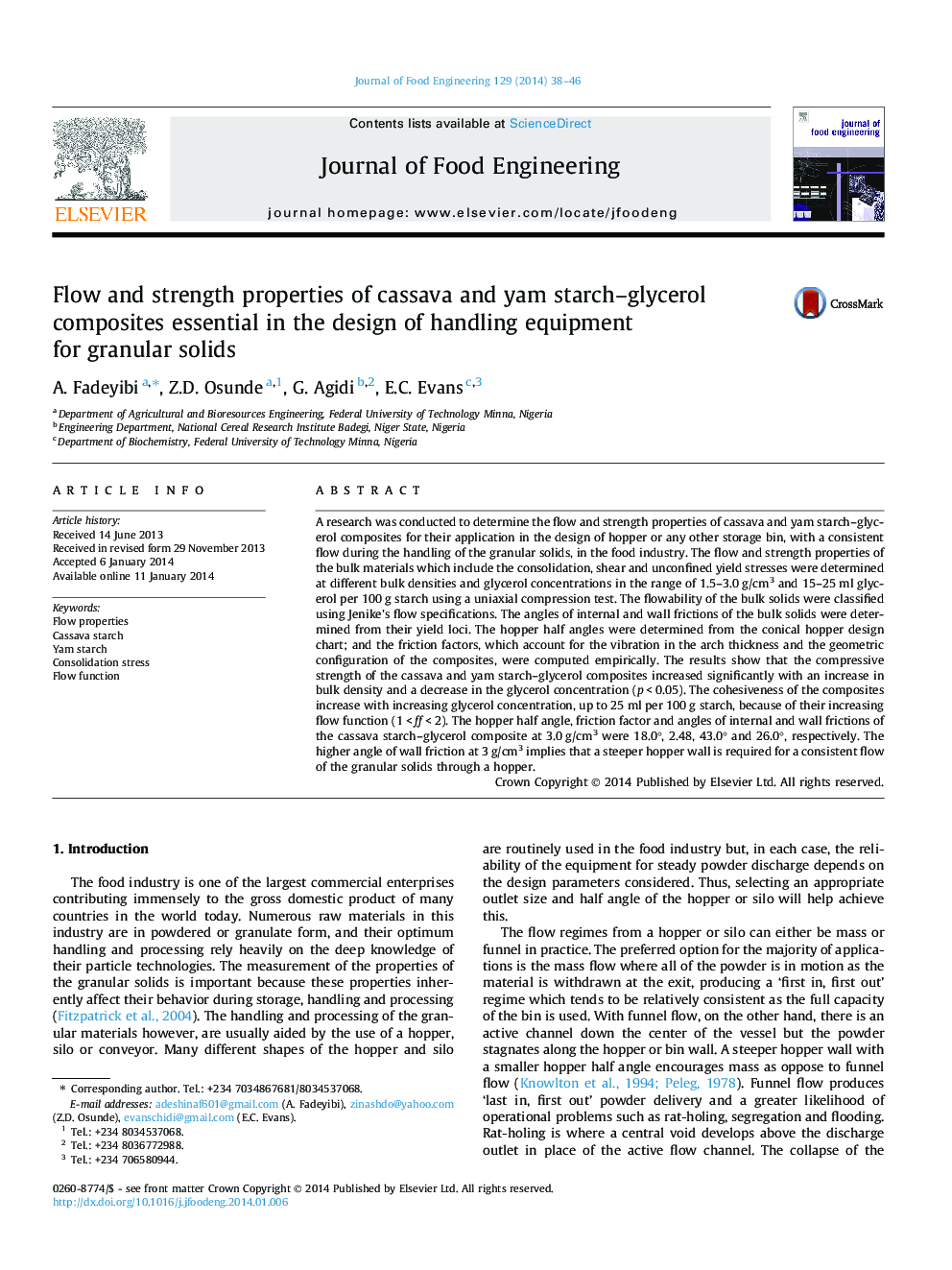| کد مقاله | کد نشریه | سال انتشار | مقاله انگلیسی | نسخه تمام متن |
|---|---|---|---|---|
| 223231 | 464344 | 2014 | 9 صفحه PDF | دانلود رایگان |
• The flow functions of the bulk materials are in the range 1 < ff < 2.
• The hopper half angles of the bulk materials at 3 g/cm3 were 18.0° and 25.0°.
• The high angle of wall friction at 3 g/cm3 required steeper hopper in design.
• Flow functions can be used in the characterization of flowability of powders.
A research was conducted to determine the flow and strength properties of cassava and yam starch–glycerol composites for their application in the design of hopper or any other storage bin, with a consistent flow during the handling of the granular solids, in the food industry. The flow and strength properties of the bulk materials which include the consolidation, shear and unconfined yield stresses were determined at different bulk densities and glycerol concentrations in the range of 1.5–3.0 g/cm3 and 15–25 ml glycerol per 100 g starch using a uniaxial compression test. The flowability of the bulk solids were classified using Jenike’s flow specifications. The angles of internal and wall frictions of the bulk solids were determined from their yield loci. The hopper half angles were determined from the conical hopper design chart; and the friction factors, which account for the vibration in the arch thickness and the geometric configuration of the composites, were computed empirically. The results show that the compressive strength of the cassava and yam starch–glycerol composites increased significantly with an increase in bulk density and a decrease in the glycerol concentration (p < 0.05). The cohesiveness of the composites increase with increasing glycerol concentration, up to 25 ml per 100 g starch, because of their increasing flow function (1 < ff < 2). The hopper half angle, friction factor and angles of internal and wall frictions of the cassava starch–glycerol composite at 3.0 g/cm3 were 18.0°, 2.48, 43.0° and 26.0°, respectively. The higher angle of wall friction at 3 g/cm3 implies that a steeper hopper wall is required for a consistent flow of the granular solids through a hopper.
Journal: Journal of Food Engineering - Volume 129, May 2014, Pages 38–46
